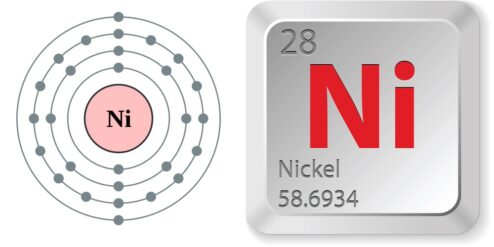Introduzione: Nickel is a naturally occurring element that is often used in various industries due to its resistance to heat and corrosion. However, exposure to nickel can lead to health issues, particularly in those with a sensitivity or allergy to it. This article aims to provide an understanding of nickel, its common sources, associated health risks, and practical ways to avoid it.
Understanding Nickel and its Common Sources
Nickel is a silvery-white metal that is used in many everyday items, from coins and jewelry to stainless steel utensils and mobile phones. It is also found in certain foods like nuts, chocolate, and certain types of fish and shellfish. Nickel is also present in the environment, found in soil, water, and air. Industrial processes such as mining, smelting, and refining can also release nickel into the environment.
The Health Risks Associated with Nickel Exposure
Exposure to nickel can lead to various health issues. The most common is nickel allergy, which can cause skin rashes and itching. In severe cases, it can cause breathing difficulties and chest pain. Long-term exposure to nickel can lead to chronic bronchitis, reduced lung function, and lung and nasal cancer. Ingesting nickel-contaminated water or food can cause stomach ache, nausea, and vomiting.
Identifying Nickel in Everyday Items
Identifying nickel in everyday items can be challenging as it is often mixed with other metals. However, a simple way to identify nickel is through a dimethylglyoxime (DMG) test. This test involves applying a solution of DMG on the item. If it turns pink, it indicates the presence of nickel. Some common items that may contain nickel include jewelry, watches, eyeglass frames, zippers, buttons, and certain kitchen utensils.
Practical Tips to Reduce Nickel Exposure
Reducing nickel exposure involves being aware of the items that contain nickel and taking steps to avoid them. This includes choosing jewelry made of nickel-free materials, using plastic or coated utensils instead of stainless steel ones, and avoiding foods high in nickel. It’s also important to check labels on products, as some may indicate if they contain nickel. If you’re unsure, you can use a nickel detection kit to test the item.
Nickel-Free Alternatives for Common Products
Fortunately, there are many nickel-free alternatives available for common products. For jewelry, consider materials like titanium, sterling silver, or 18k gold. For kitchen utensils, opt for plastic, wood, or ceramic options. There are also nickel-free buttons and zippers available for clothing. Additionally, consider using nickel-free personal care products, such as makeup and hair accessories.
Monitoring and Managing Nickel Allergy Symptoms
If you have a nickel allergy, it’s important to monitor and manage your symptoms. This includes avoiding direct skin contact with nickel, using hypoallergenic products, and applying a corticosteroid cream or ointment to affected areas. If symptoms persist, seek medical attention. Regular check-ups with a dermatologist can also help manage the condition.
Conclusioni: Avoiding nickel can be challenging due to its widespread use. However, with awareness and careful choices, it’s possible to reduce exposure and manage symptoms. Remember, if you suspect you have a nickel allergy, it’s important to seek medical advice.
Per approfondire:
- Nickel Allergy – Mayo Clinic: This link provides comprehensive information about nickel allergy, its symptoms, causes, and treatment.
- Nickel – World Health Organization: This document from WHO provides detailed information about nickel, its sources, and its health effects.
- Nickel in Jewelry – American Academy of Dermatology: This page provides information about nickel in jewelry and how to avoid it.
- Nickel Allergy – American Osteopathic College of Dermatology: This link provides information about nickel allergy and how to manage it.
- Nickel Allergy – DermNet NZ: This page provides detailed information about nickel allergy, including how to identify and avoid nickel in everyday items.


